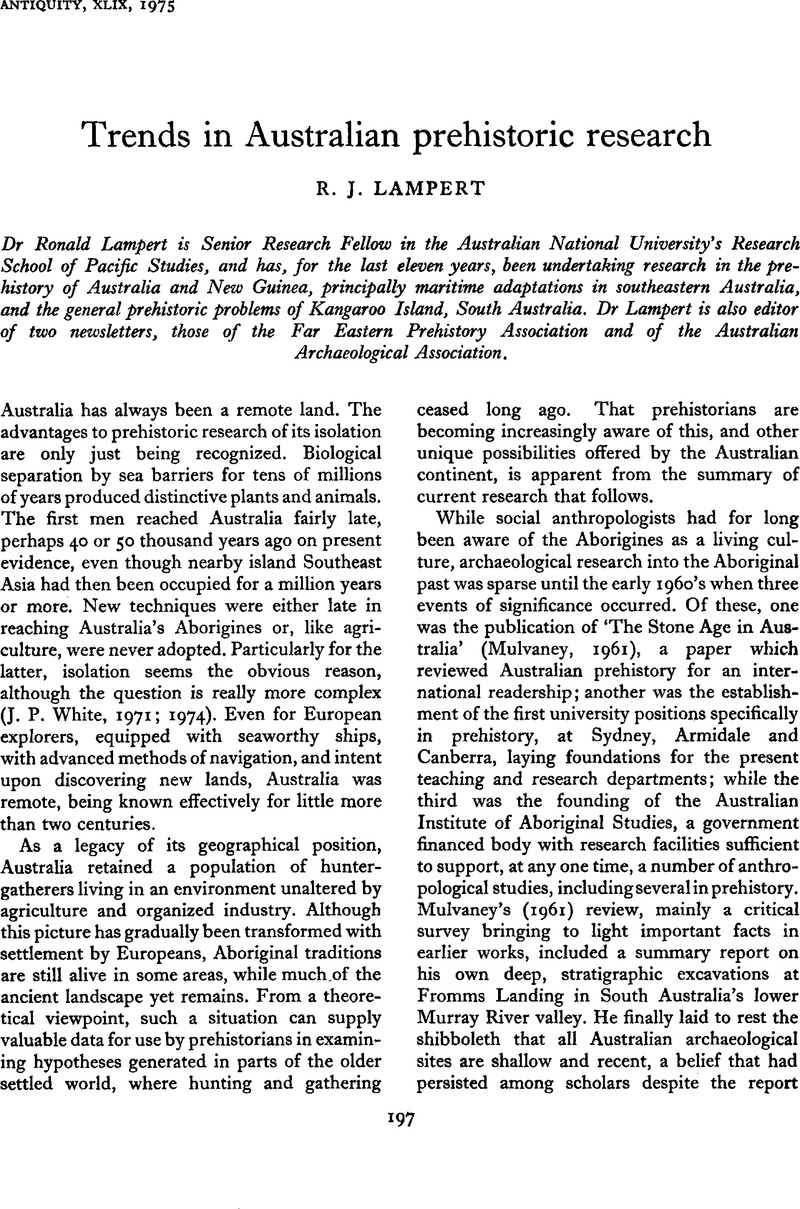Crossref Citations
This article has been cited by the following publications. This list is generated based on data provided by Crossref.
Hallam, Sylvia J.
1977.
The Relevance of Old World Archaeology to the First Entry of Man into New Worlds: Colonization Seen from the Antipodes.
Quaternary Research,
Vol. 8,
Issue. 1,
p.
128.
Morwood, M. J.
1981.
Archaeology of the Central Queensland Highlands: The Stone Component.
Archaeology in Oceania,
Vol. 16,
Issue. 1,
p.
1.
McBryde, Isabel
1986.
Australia's once and future archaeology.
Archaeology in Oceania,
Vol. 21,
Issue. 1,
p.
13.
Huchet, Bernard
1991.
Theories and Australian Prehistory: The Last Three Decades.
Australian Archaeology,
Vol. 33,
Issue. 1,
p.
44.
Beaton, J. M.
1994.
M.A. Smith, M. Spriggs & B. Fankhauser (ed.). Sahul in review: Pleistocene archaeology in Australia, New Guinea and Island Melanesia. (Occasional Papers in Prehistory 24.) viii+312 pages, 114 illustrations, tables. 1993. Canberra: Department of Prehistory, Research School of Pacific Studies, The Australian National University; ISBN 0-7315-1540-4 paperback Aus$34..
Antiquity,
Vol. 68,
Issue. 261,
p.
893.
Draper, Neale
2015.
Islands of the dead? Prehistoric occupation of Kangaroo Island and other southern offshore islands and watercraft use by Aboriginal Australians.
Quaternary International,
Vol. 385,
Issue. ,
p.
229.



